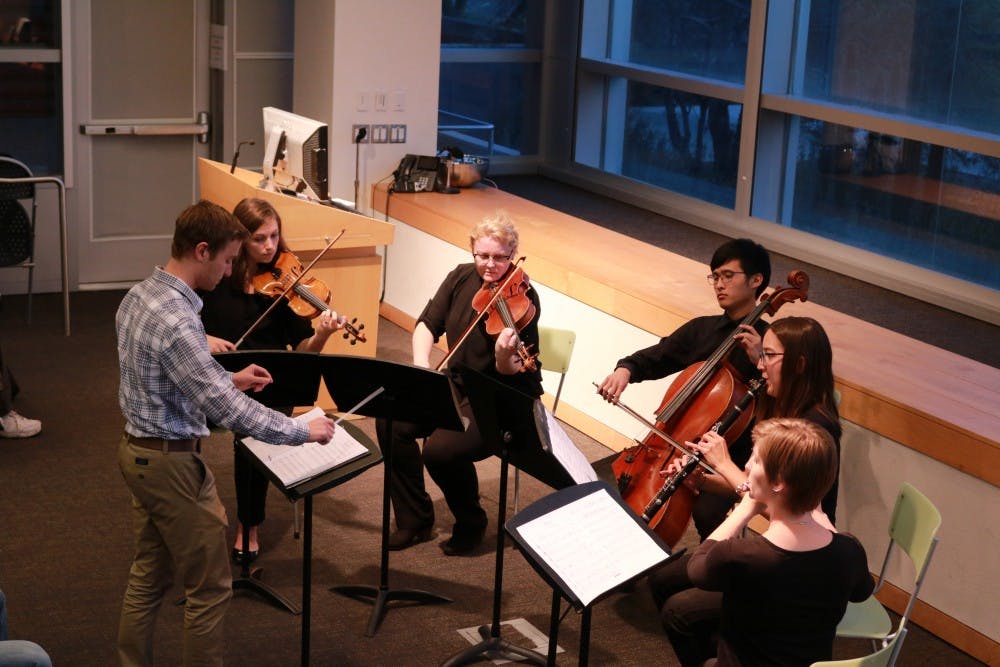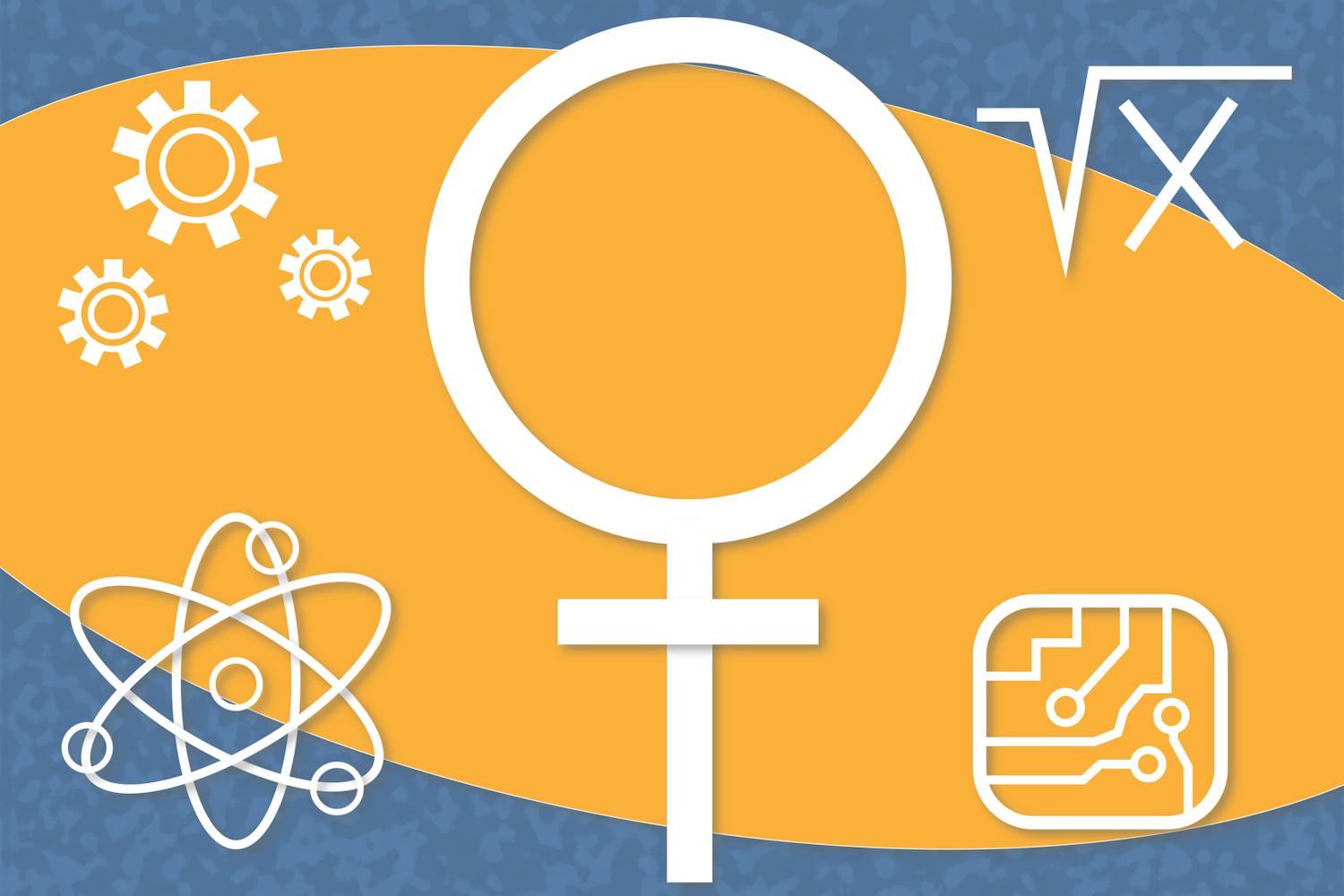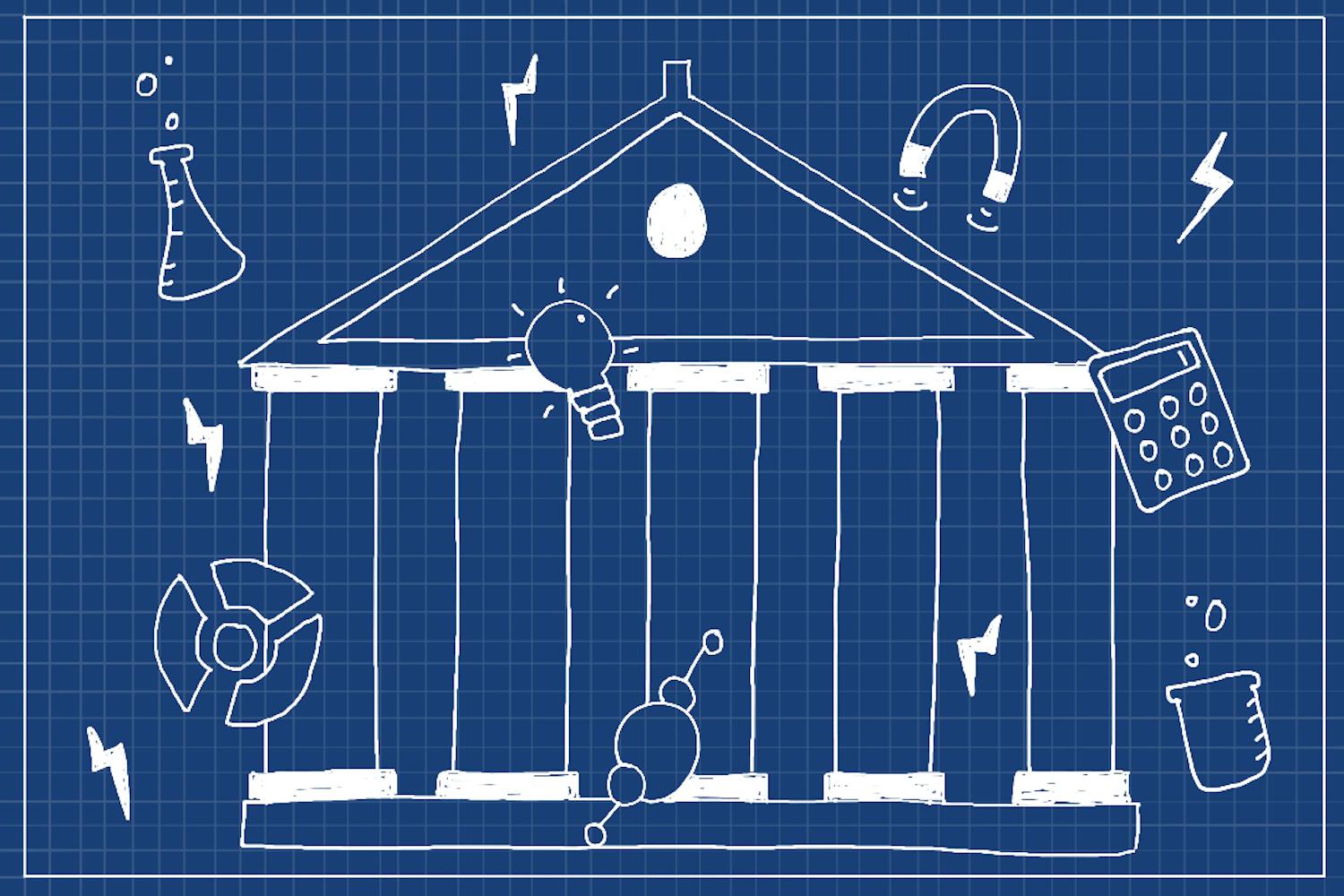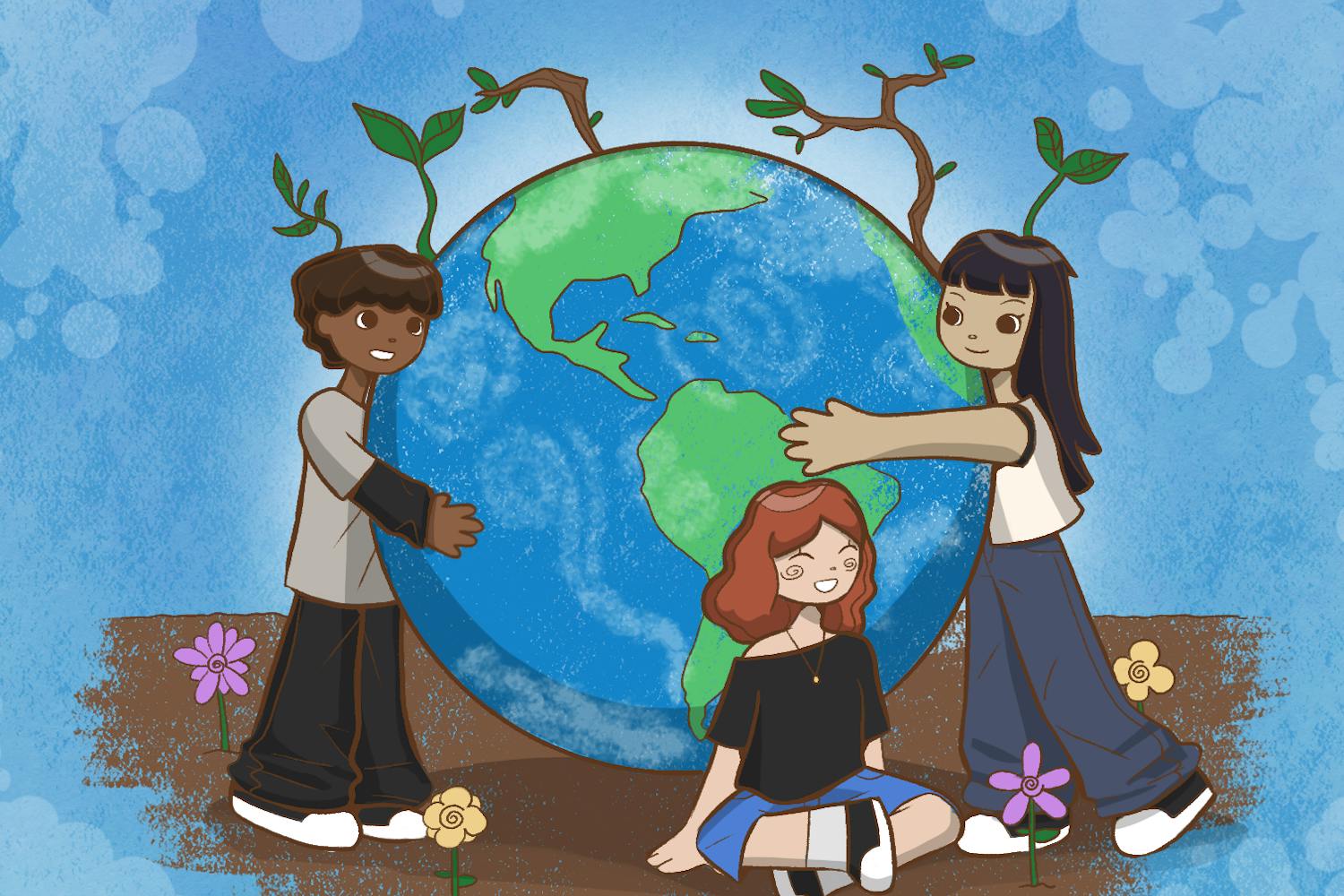Science Exposed, the first event of its kind at ASU, showcased research and science through music and art.
The event was held at ASU's Biodesign Institute April 26, spearheaded by professors in science and art disciplines to help create a better understanding of complex scientific topics. Students filled both roles, as scientists and artists in pieces ranging from ballet performances to interactive presentations.
Stephen Mitton, an senior in the Herberger Institute, was one of the two student composers for the event. The music he performed for Science Exposed was inspired by Alzheimer’s and how caretakers are also affected in the cycle of the disease. He was accompanied by five other musicians the night of the event.
Mitton said he had a very personal connection with the project, since a member of his family passed away from Alzheimer's disease five years ago. Since then, he said he has been interested in keeping up with research and different kinds of progress.
“Having met all the scientists, what’s really been keeping me going is the people I’ve gotten to meet and the things I’ve learned,” Mitton said.
He said he was given almost complete freedom, as far music goes, “the thought of telling this story through music is very interesting.”
Mitton said he hopes people hear the connection in his music.
“I hope people are able to hear the connection between the music and the work done at Biodesign,” Mitton said.
Liz Lerman, professor at the Herberger Institute and a member of ASU’s dance faculty, was invited to start the Science Exposed project with ASU in summer 2016.
She ran a nonprofit dance company out of Washington, D.C. later handing the company over to younger artists, and then spent many years working as an independent artist. Lerman is also this year’s Jacob’s Pillow Dance Award recipient.
Lerman said she was thrilled to accept the invitation to join the project because she has always had an interest in science.
"Everybody was so spectacular and the challenge was so big, that it seemed like a really interesting place to come," she said.
Upon arrival at ASU, she said she immediately began to work on Science Exposed.
“I’m interested in the art students learning how to tell someone else’s story,” Lerman said. “There’s a responsibility but there’s also freedom."
She said her performers got the opportunity to work with different scientists in the lab to develop an piece of art that represented the topic accurately.
Lerman said the project is a great example of different things happening in the world right now, with people collaborating more and through many different avenues.
“I think there’s a lot of overlap between science and art,” Lerman said, adding that both areas are very curious and involve a lot of experimentation whether it be in rehearsals or in labs.
ASU 'Science Exposed' blends music, dance and — Alzheimer's research? https://t.co/pUzt5yc6Z8 via @azcentral
— Herberger Institute (@ASUHIDA) April 24, 2017
Dianne Price, the director of marketing and communications for the Biodesign Institute, said she worked very closely with Lerman on the project.
“I attract people who are interested in science, and she (Lerman) attracts the art people,” Price said.
“My job is decoding,” Price said. “The scientists speak in their own language in a very specialized area, where most of us don’t have the knowledge or training to understand.”
Price said helping people explain science was a key motive as far as how Science Exposed came to life.
“I have been overwhelmed by the amazing pockets of intelligence and creativity in the University,” Price said.
Price said she was also excited to find similarities between science and art, and was surprised to see that many of the scientist are also artists.
“What science and art have in common is that both disciplines happen on the edge of the known and the unknown,” she said.
Reach the reporter at stefany.marquez@asu.edu or follow @stefmarz on Twitter.
Like The State Press on Facebook and follow @statepress on Twitter.




